With the Portland City Council’s final decision not to further delay projects to build new reservoirs to replace the five historic open reservoirs, on the west side of the city in Washington Park a new below grade water storage tank is being planned in the general footprint of one reservoir. The second of the two reservoirs at Washington Park will be decommissioned and used for new purposes. The implementation of underground storage tanks may still elicit a spirited discussion. And at the heart of the discussion is how to implement thoughtful change to a historic, well loved cultural resource to the rigors of rapidly evolving public safety and seismic protection mandates.
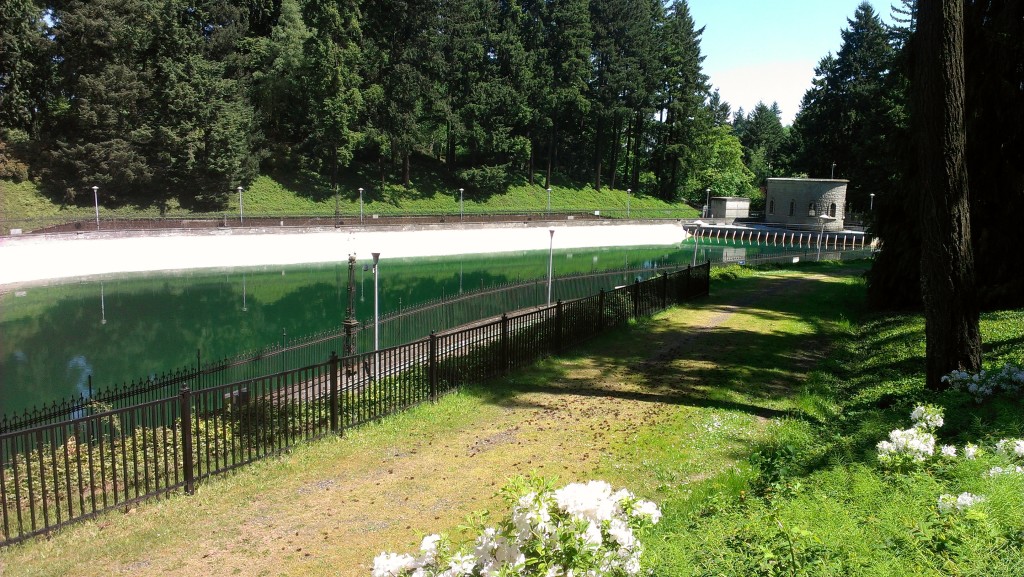
Reservoirs 3 and 4
Reservoirs 3 and 4 were constructed as part of the Bull Run water system, a gravity-fed mountain watershed system built between 1894 and 1911 to provide the City of Portland with high quality drinking water. Reservoirs 3 and 4 continue to function as the city’s primary water distribution source for the west side of Portland. The reservoirs have been in continuous operation for more than 100 years. They serve as a featured amenity enriching the landscape of Washington Park, one of Portland’s largest and oldest parks, with vistas of open water, and period historic structures. Also due to their location on hills on the west side of the city, scenic views are afforded across the reservoir water.
As summarized in the National Register of Historic Places nomination, “one of the most defining landscape principle of Reservoirs 3 and 4 is the open expanse of water, their irregular shape, rusticated concrete structures, and ornate wrought iron detailing of fences and lampposts. The reservoirs are a striking and elegant addition to the serene forest that makes up this end of Washington Park. The surrounding forest is composed primarily of Douglas fir, western red cedar, and big leaf maple all predominating native tree species of the Pacific Northwest.”

The Design Challenge
The challenge is to design a 100 year plus engineering solution while simultaneously designing a thoughtful change to the context, natural park setting, and historic district. Arising from the Olmsted Brothers vision for Portland and the City Beautiful movement, the changes to the Reservoirs offer an opportunity to evaluate the evolution of development outside Washington Park within the Park, changes to the Reservoirs themselves, public access, and protection of cultural amenities. If access to the “water” is transformed to a public amenity, how does the design enhance the serene qualities of the site? How should the change reconnect the reservoir area with the surrounding neighborhood and Park features?
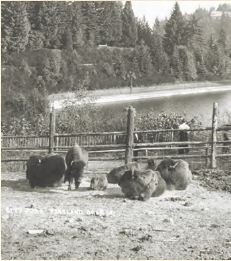 The reservoirs embody the challenge associated with retaining a historic place as both a visual element and a dynamic landscape. The safety, security and seismic solutions may alter the purpose of the visual feature and the interaction with the “water,” but that does not translate into a diminishing of a historic place. There are no easy answers. In the end, this final decision should be assuring that the Washington Park Reservoirs will continue to provide safe, reliable water storage, and to elicit wonder well beyond the next 100 years.
The reservoirs embody the challenge associated with retaining a historic place as both a visual element and a dynamic landscape. The safety, security and seismic solutions may alter the purpose of the visual feature and the interaction with the “water,” but that does not translate into a diminishing of a historic place. There are no easy answers. In the end, this final decision should be assuring that the Washington Park Reservoirs will continue to provide safe, reliable water storage, and to elicit wonder well beyond the next 100 years.
Written by Kristen Minor, Preservation Planner

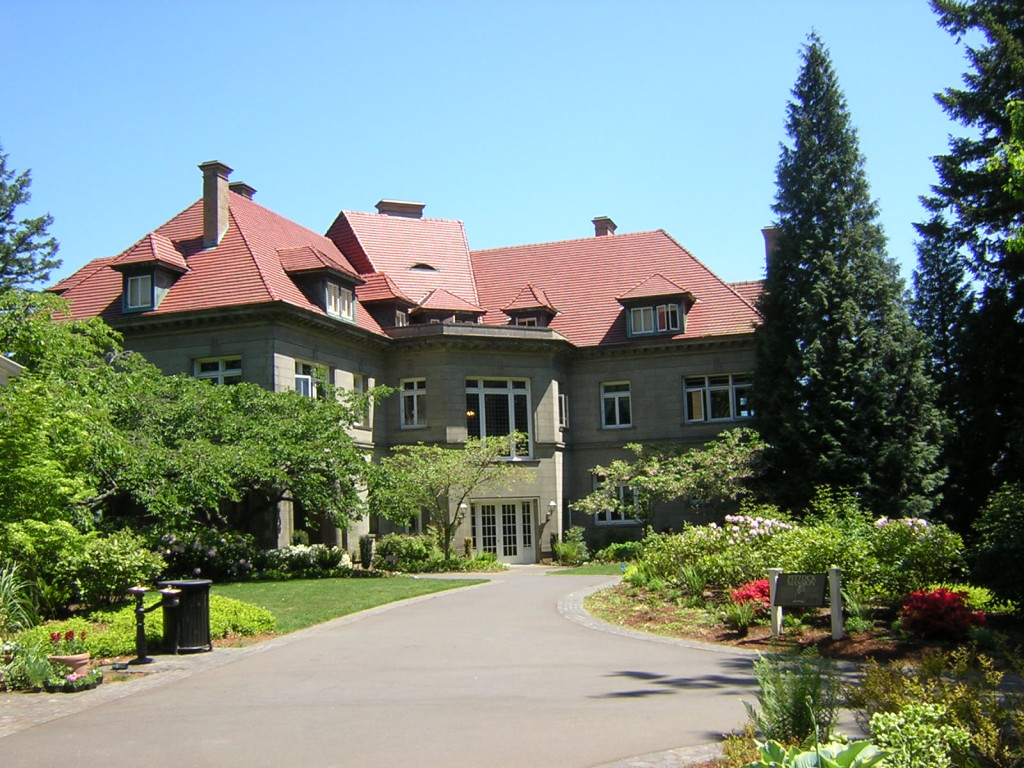
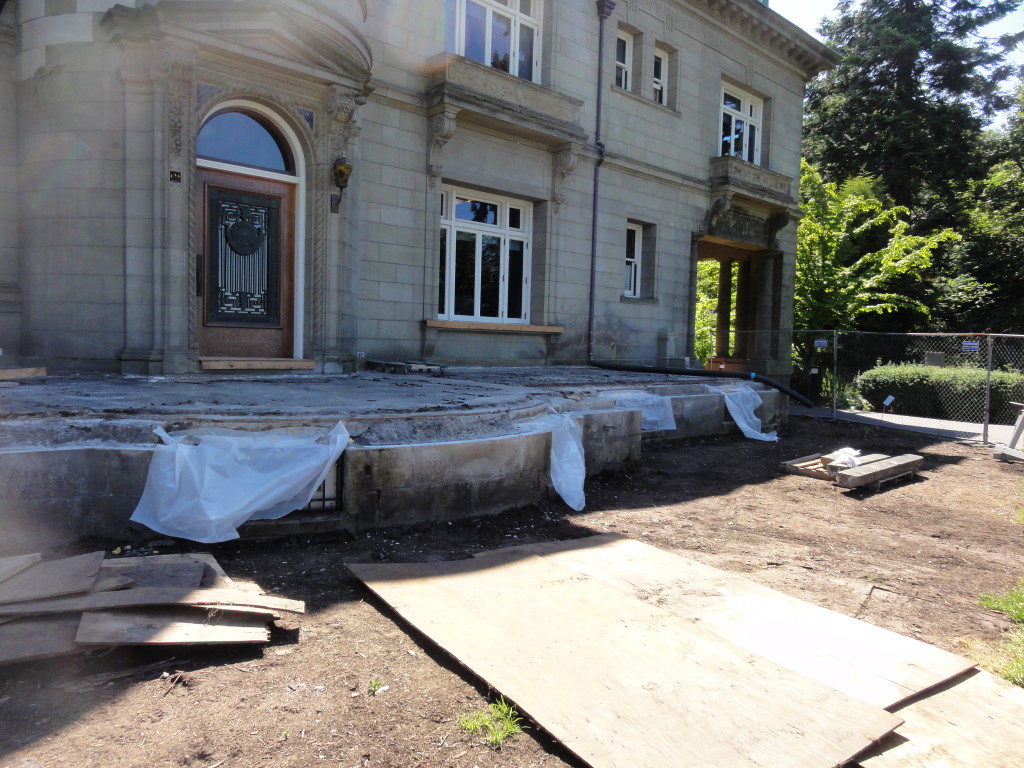
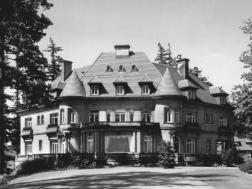 There is still much work to be done. The Pittock Mansion Society has identified the top priority projects ranging from the practical structural and electrical work to additional programming and preservation projects. The Centennial celebration will be a grand formal affair, fitting for such a magnificent and unique cultural icon within the City of Portland’s stewardship.
There is still much work to be done. The Pittock Mansion Society has identified the top priority projects ranging from the practical structural and electrical work to additional programming and preservation projects. The Centennial celebration will be a grand formal affair, fitting for such a magnificent and unique cultural icon within the City of Portland’s stewardship.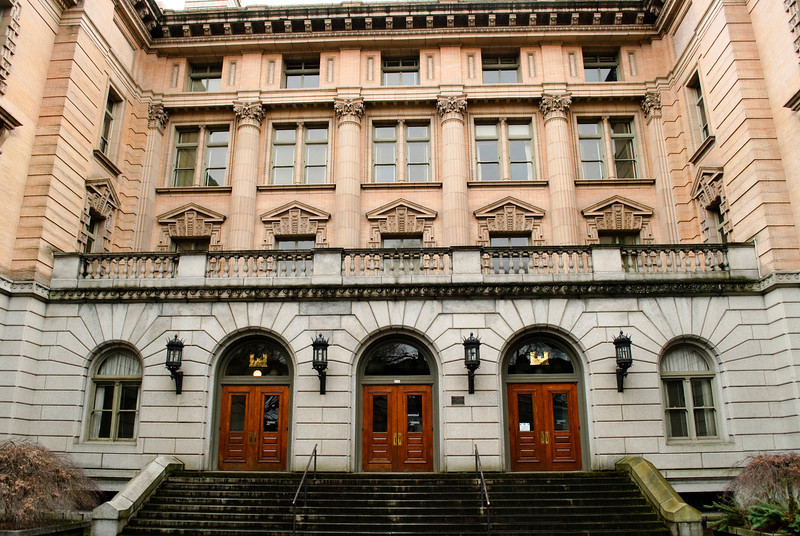
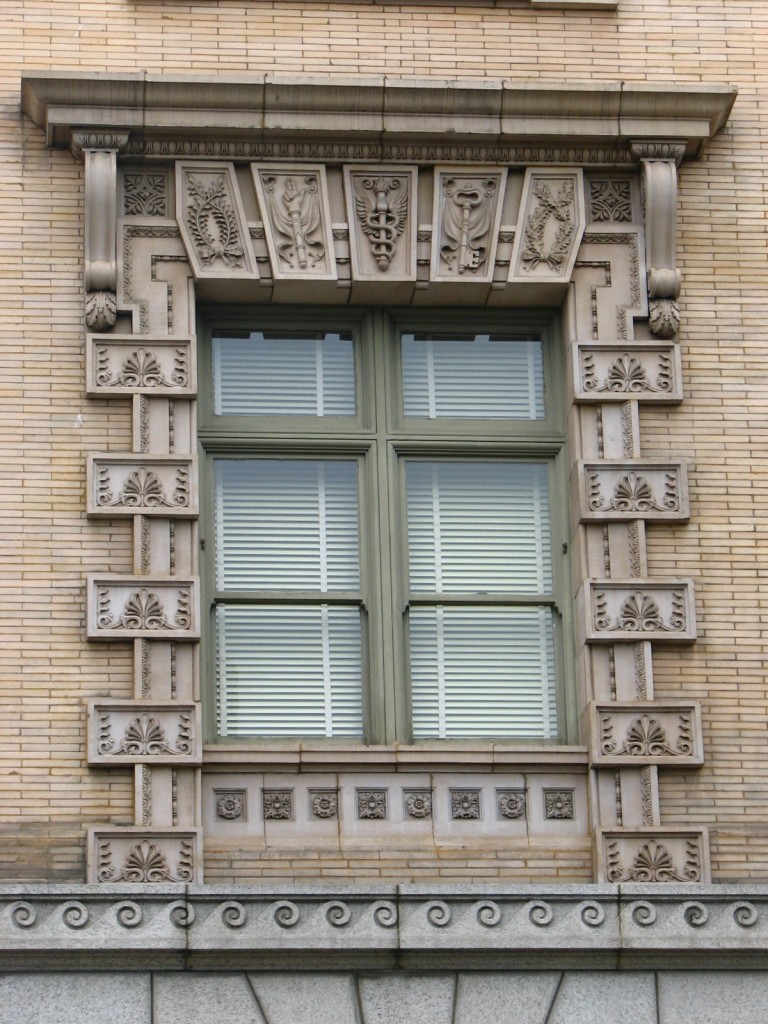 The balance is the most recognizable symbol, symbolizing justice. It follows that since the U.S. Custom House was built for the U.S. Custom Services, which played a significant role in the economic growth of the area, architectural ornamentation of the symbol of justice would be included. This symbol tells the audience that all services by its governing body will be conducted justly. The key is borrowed from a Christian symbol which references the bureaucratic nature of Saint Peter’s ability to grant or withhold salvation. This symbol was common in architectural ornamentation in the sixteenth-century, when politics and religion were heavily and most complicatedly intertwined. Perhaps the keys are meant to remind those within to repent, but more likely serve as an emblem of time and removers of obstacles- which are also emblems of the Roman God Janis.
The balance is the most recognizable symbol, symbolizing justice. It follows that since the U.S. Custom House was built for the U.S. Custom Services, which played a significant role in the economic growth of the area, architectural ornamentation of the symbol of justice would be included. This symbol tells the audience that all services by its governing body will be conducted justly. The key is borrowed from a Christian symbol which references the bureaucratic nature of Saint Peter’s ability to grant or withhold salvation. This symbol was common in architectural ornamentation in the sixteenth-century, when politics and religion were heavily and most complicatedly intertwined. Perhaps the keys are meant to remind those within to repent, but more likely serve as an emblem of time and removers of obstacles- which are also emblems of the Roman God Janis. 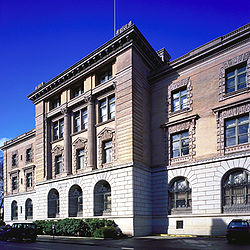 Portland’s U.S. Custom House is unquestionably one of Portland’s finest historic structures. It is an exquisite display of the Italian Renaissance Revival style of architecture with a symmetrical organization, use of terra-cotta, Roman brick, and granite materials, classically engaged Doric, Iconic, and Corinthian Columns, and displays of richly detailed architectural ornamentation found throughout the Gibbs-Surround. While it has been said the allegorical symbolic ornamentation used on U.S. Custom House is without significance and merely decorative, the explanation of each symbol has led to the credible reason for the inclusion of all these symbols. For the architecture of Portland’s U.S. Custom House is in the Italian Renaissance style, a style that uses symbolic ornamentation to signify both emotion and reason.
Portland’s U.S. Custom House is unquestionably one of Portland’s finest historic structures. It is an exquisite display of the Italian Renaissance Revival style of architecture with a symmetrical organization, use of terra-cotta, Roman brick, and granite materials, classically engaged Doric, Iconic, and Corinthian Columns, and displays of richly detailed architectural ornamentation found throughout the Gibbs-Surround. While it has been said the allegorical symbolic ornamentation used on U.S. Custom House is without significance and merely decorative, the explanation of each symbol has led to the credible reason for the inclusion of all these symbols. For the architecture of Portland’s U.S. Custom House is in the Italian Renaissance style, a style that uses symbolic ornamentation to signify both emotion and reason.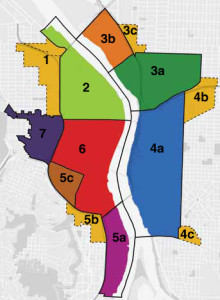 Many of Portland’s iconic landmark buildings are modern era resources, such as the Veterans Memorial Coliseum, Lloyd Center Mall, U.S. Bancorp tower, and the Portland Building. The survey intentionally excludes these well-known properties in order to highlight broader architectural patterns and identify some of the less prominent buildings that may be considered historically significant in the future.
Many of Portland’s iconic landmark buildings are modern era resources, such as the Veterans Memorial Coliseum, Lloyd Center Mall, U.S. Bancorp tower, and the Portland Building. The survey intentionally excludes these well-known properties in order to highlight broader architectural patterns and identify some of the less prominent buildings that may be considered historically significant in the future.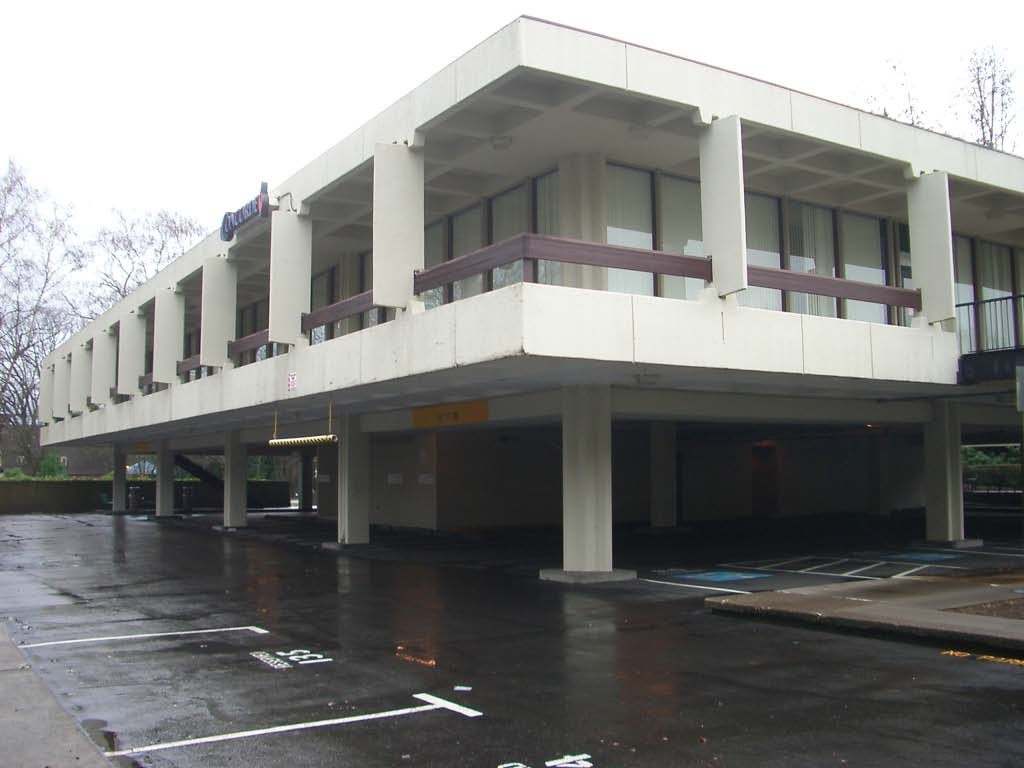 Of approximately 976 modern period resources within the Central City’s seven geographic clusters, PMA selected 152 properties for reconnaissance level survey. Representation of geographic clusters, resource typologies, and potential eligibility were considered when selecting properties to survey. In a selective survey, most properties should be considered potentially eligible for historic designation. Online maps, tax assessor information, and Google Earth were used to inform the selection process. Fieldwork involved taking photographs of each property, recording the resource type, cladding materials, style, height, plan type, and auxiliary resources, and then making a preliminary determination of National Register eligibility based on age, integrity, and historic character-defining features. A final report outlines the project and findings, and survey data was added to the Oregon Historic Sites database.
Of approximately 976 modern period resources within the Central City’s seven geographic clusters, PMA selected 152 properties for reconnaissance level survey. Representation of geographic clusters, resource typologies, and potential eligibility were considered when selecting properties to survey. In a selective survey, most properties should be considered potentially eligible for historic designation. Online maps, tax assessor information, and Google Earth were used to inform the selection process. Fieldwork involved taking photographs of each property, recording the resource type, cladding materials, style, height, plan type, and auxiliary resources, and then making a preliminary determination of National Register eligibility based on age, integrity, and historic character-defining features. A final report outlines the project and findings, and survey data was added to the Oregon Historic Sites database.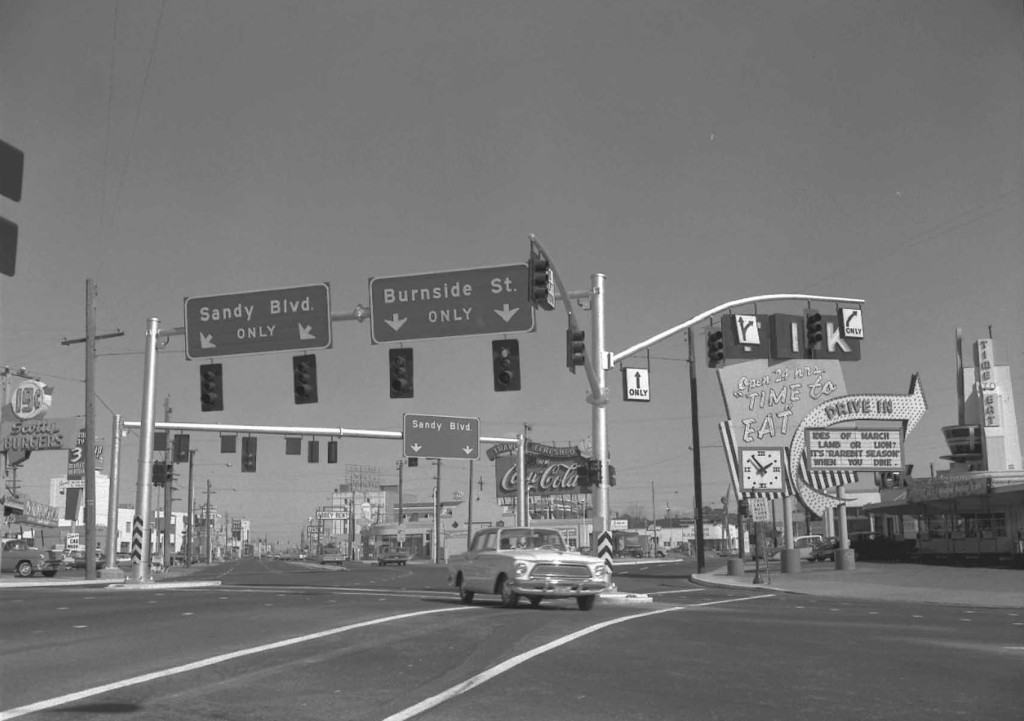
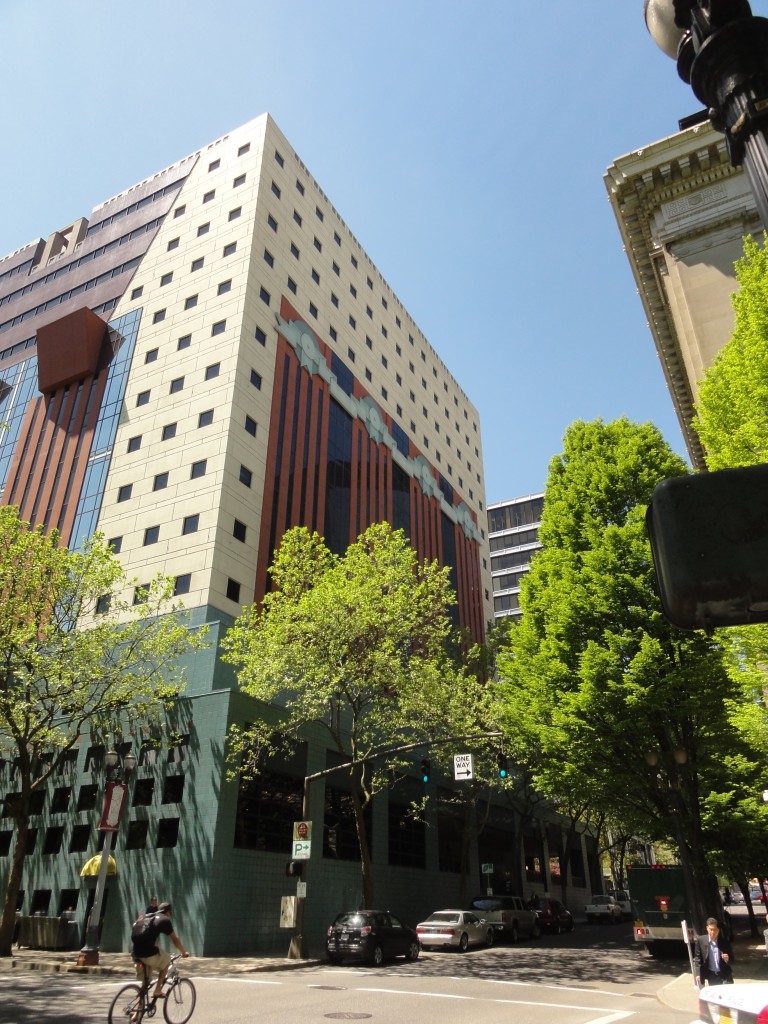 The Portland Building itself is significant as one of a handful of high-profile building designs that defined the aesthetic of Post Modern Classicism in the United States between the mid-1960s and the 1980s. Constructed in 1982, the Portland Public Service Building is nationally significant as the notable work that crystallized Michael Graves’s reputation as a master architect and as an early and seminal work of Post-Modern Classicism, an American style that Graves himself defined through his work. The structure is ground-breaking for its rejection of “universal” Modernist principles in favor of bold and symbolic color, well-defined volumes, and stylized- and reinterpreted-classical elements such as pilasters, garlands, and keystones.
The Portland Building itself is significant as one of a handful of high-profile building designs that defined the aesthetic of Post Modern Classicism in the United States between the mid-1960s and the 1980s. Constructed in 1982, the Portland Public Service Building is nationally significant as the notable work that crystallized Michael Graves’s reputation as a master architect and as an early and seminal work of Post-Modern Classicism, an American style that Graves himself defined through his work. The structure is ground-breaking for its rejection of “universal” Modernist principles in favor of bold and symbolic color, well-defined volumes, and stylized- and reinterpreted-classical elements such as pilasters, garlands, and keystones. 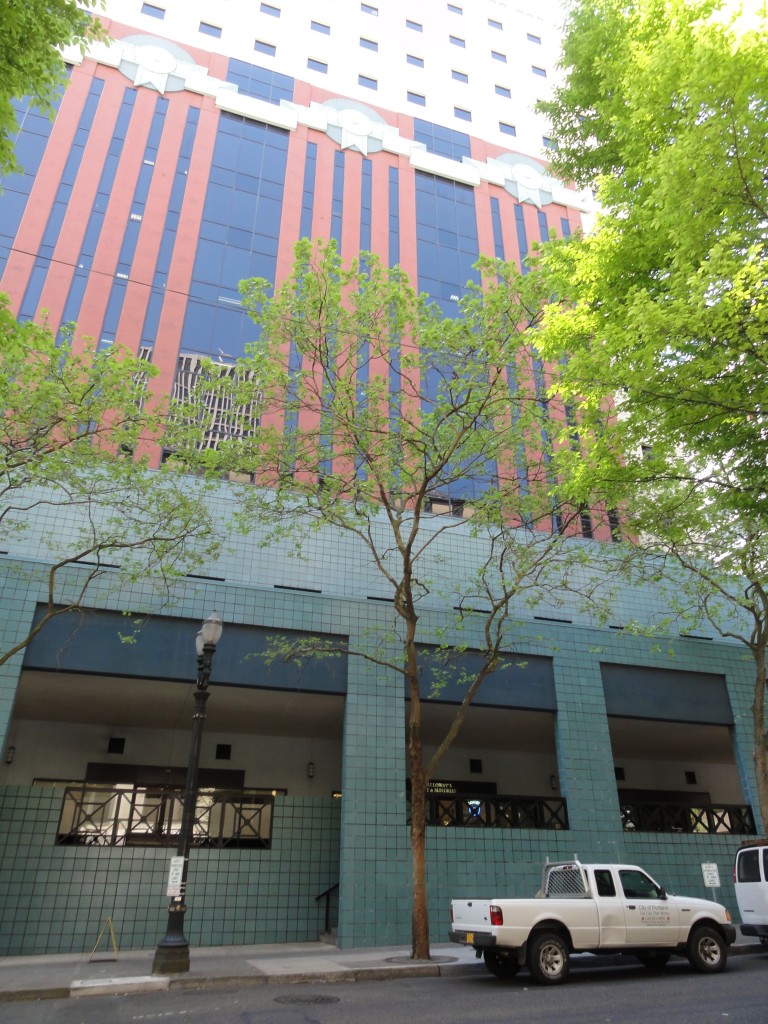 As one of the earliest large-scale Post-Modern buildings constructed, Graves’s design for the Portland Building was daring; almost shocking, in its vision for the future, and for its proposition as to what “after Modernism” could mean for architecture. The building itself is a fifteen-story regularly-fenestrated symmetrical monumental block clad in scored off-white colored stucco and set on a stepped two-story pedestal of blue-green tile. The building’s style is expressed through paint and applied ornament that implies classical architectural details, including terracotta tile pilasters and keystone, mirrored glass, and flattened and stylized garlands, among other elements that are intended to convey multiple meanings. For instance, the building is organized in a classical three-part division, bottom, middle, and top in reference to the human body, foot, middle, and head. At the same time, the building’s colors represent parts of the environment, with blue-green tile at the base symbolizing the earth and the light blue at the upper-most story representing the sky. The building uses layers of references to physically and symbolically tie it to place, its use, and the Western architectural tradition.
As one of the earliest large-scale Post-Modern buildings constructed, Graves’s design for the Portland Building was daring; almost shocking, in its vision for the future, and for its proposition as to what “after Modernism” could mean for architecture. The building itself is a fifteen-story regularly-fenestrated symmetrical monumental block clad in scored off-white colored stucco and set on a stepped two-story pedestal of blue-green tile. The building’s style is expressed through paint and applied ornament that implies classical architectural details, including terracotta tile pilasters and keystone, mirrored glass, and flattened and stylized garlands, among other elements that are intended to convey multiple meanings. For instance, the building is organized in a classical three-part division, bottom, middle, and top in reference to the human body, foot, middle, and head. At the same time, the building’s colors represent parts of the environment, with blue-green tile at the base symbolizing the earth and the light blue at the upper-most story representing the sky. The building uses layers of references to physically and symbolically tie it to place, its use, and the Western architectural tradition.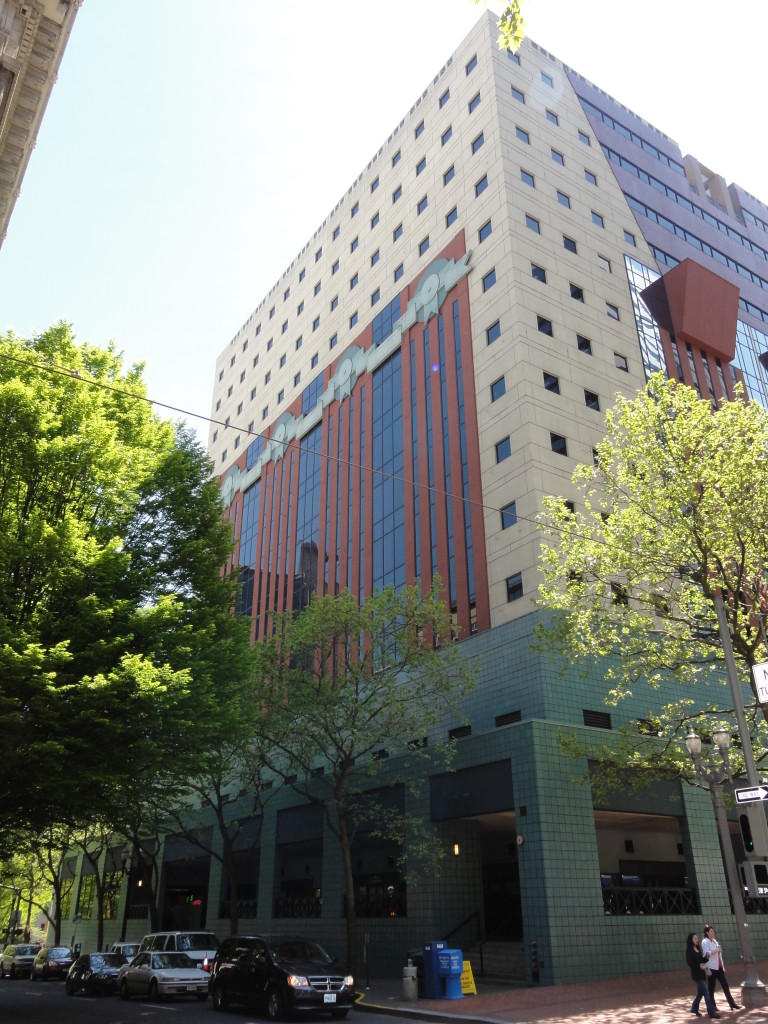 The boxy, fifteen-story building is located in the center of downtown Portland, Oregon, occupying a full 200 by 200-foot city block right next to City Hall. The Portland Building is a surprising jolt of color within the more restrained environment and designs of nearby buildings, with its blue tile base and off-white stucco exterior accented with mirrored glass, earth-toned terracotta tile, and sky-blue penthouse. The figure of Lady Commerce from the city seal, reinterpreted by sculptor Ray Kaskey to represent a broader cultural tradition and renamed ‘Portlandia,’ is placed in front of one of the large windows as a further reference to the city. The building is notable for its regular geometry and fenestration as well as the architect’s use of over-scaled and highly-stylized classical decorative features on the building’s facades, including a copper statue mounted above the entry, garlands on the north and south facades, and the giant pilasters and keystone elements on the east and west facades. Whether or not one judges the building to be beautiful or even to have fulfilled Graves’s ideas about being humanist in nature, it is undeniably important in the history of American architecture. The building has been dispassionately evaluated in various scholarly works about the history of architecture and is inextricably linked to the rise of the Post-Modern movement.
The boxy, fifteen-story building is located in the center of downtown Portland, Oregon, occupying a full 200 by 200-foot city block right next to City Hall. The Portland Building is a surprising jolt of color within the more restrained environment and designs of nearby buildings, with its blue tile base and off-white stucco exterior accented with mirrored glass, earth-toned terracotta tile, and sky-blue penthouse. The figure of Lady Commerce from the city seal, reinterpreted by sculptor Ray Kaskey to represent a broader cultural tradition and renamed ‘Portlandia,’ is placed in front of one of the large windows as a further reference to the city. The building is notable for its regular geometry and fenestration as well as the architect’s use of over-scaled and highly-stylized classical decorative features on the building’s facades, including a copper statue mounted above the entry, garlands on the north and south facades, and the giant pilasters and keystone elements on the east and west facades. Whether or not one judges the building to be beautiful or even to have fulfilled Graves’s ideas about being humanist in nature, it is undeniably important in the history of American architecture. The building has been dispassionately evaluated in various scholarly works about the history of architecture and is inextricably linked to the rise of the Post-Modern movement.